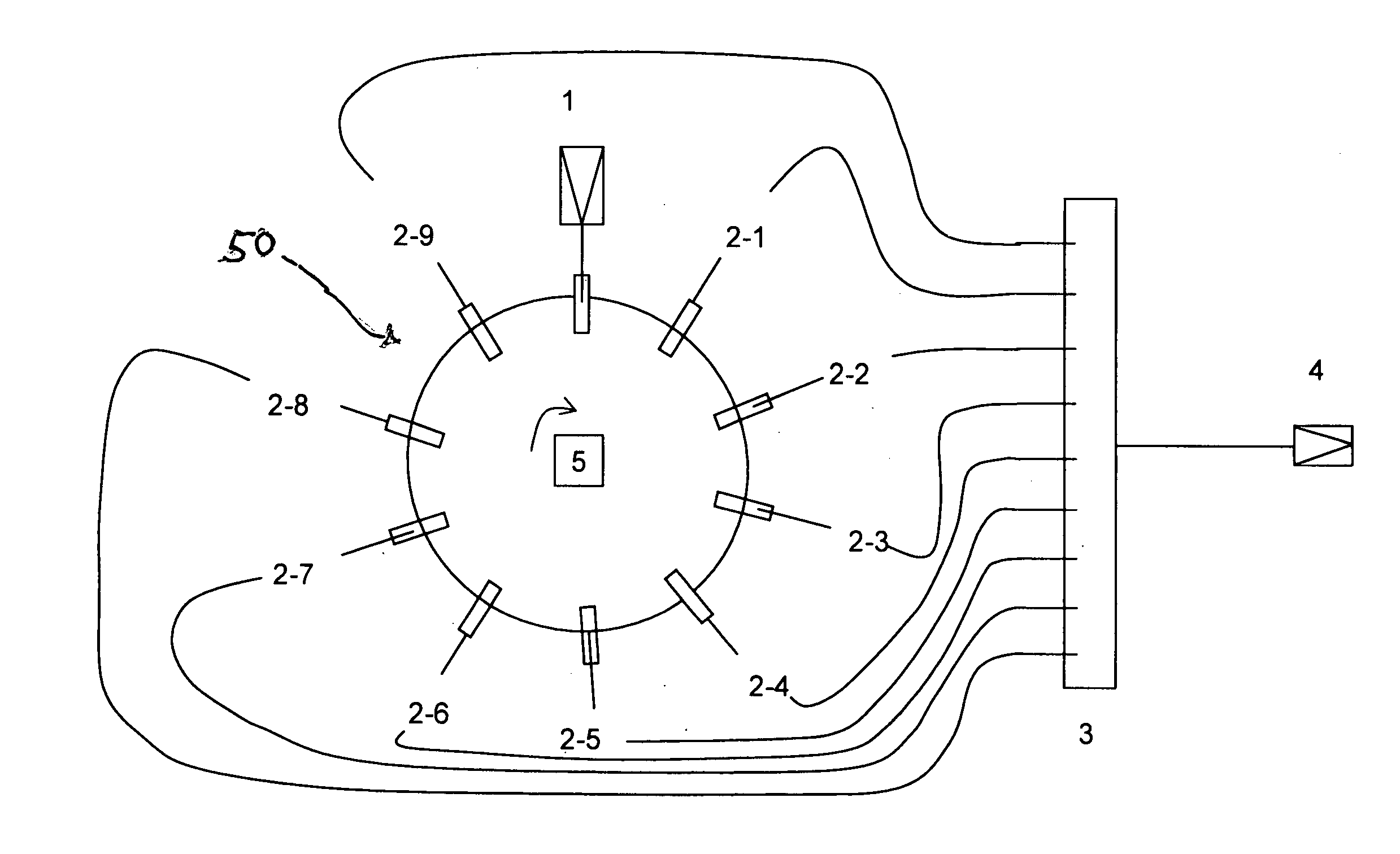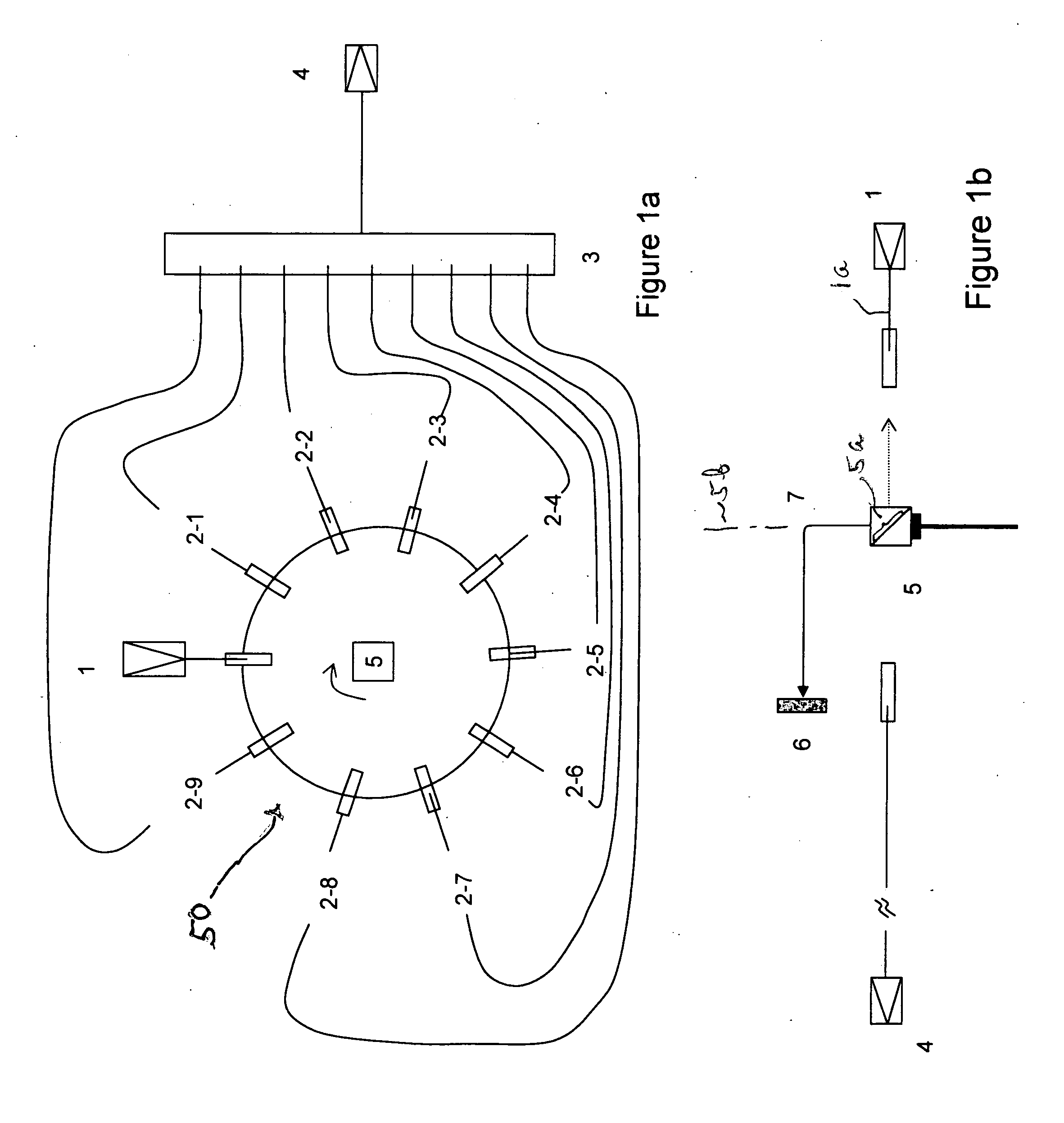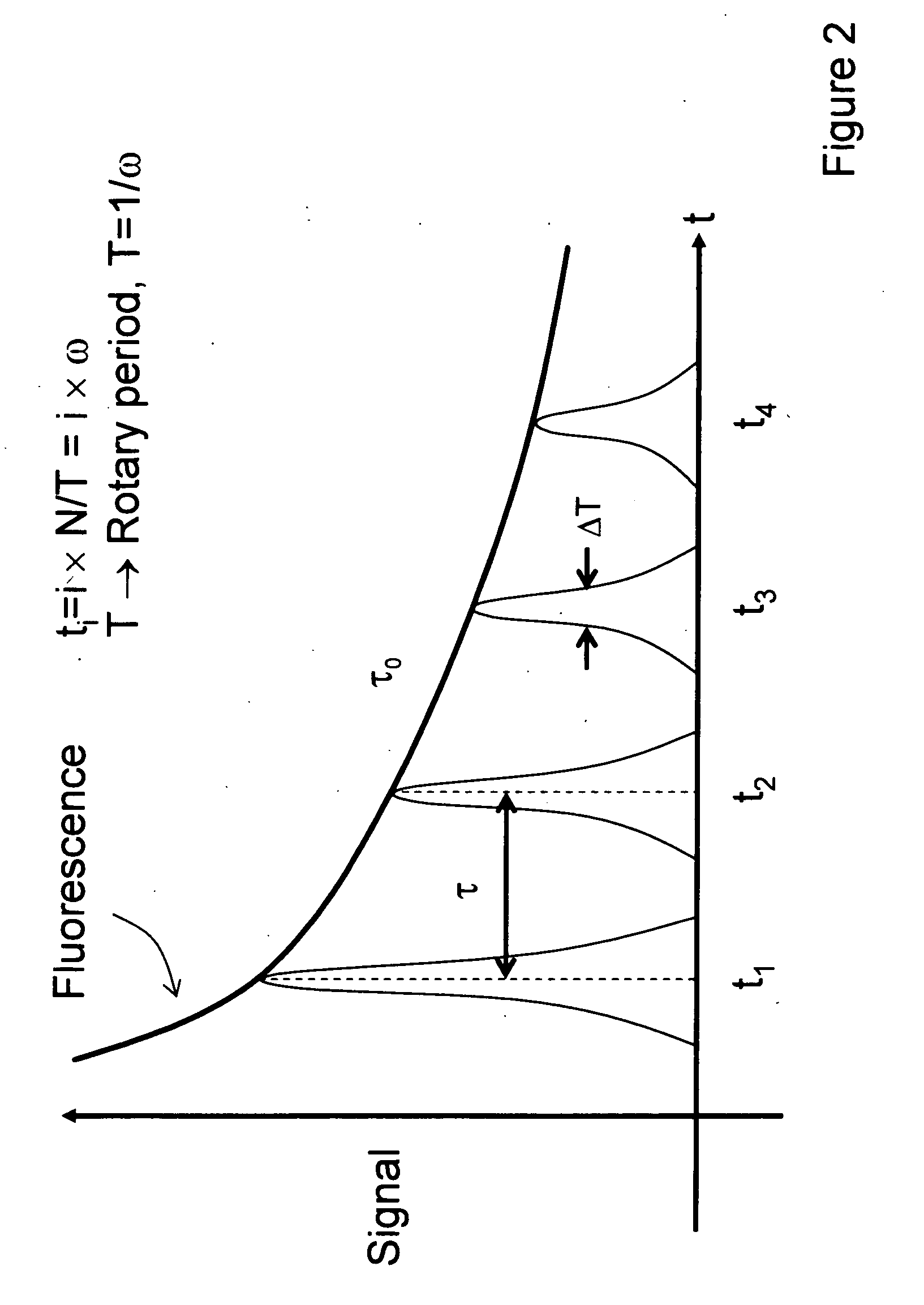Time-resolved fluorescence spectrometer for multiple-species analysis
a fluorescence spectrometer and multiple-species technology, applied in the field of time-resolved fluorescence spectrometers, can solve the problems of limiting the application of strong-emitting targets, requiring expensive and delicate equipment, and complicating the cross-talk between the pump light and the stokes signal at the detection level
- Summary
- Abstract
- Description
- Claims
- Application Information
AI Technical Summary
Benefits of technology
Problems solved by technology
Method used
Image
Examples
Embodiment Construction
[0056]The following detailed description is meant to be illustrative only and not limiting. Other embodiments of this invention will be obvious to those skilled in the art in view of this description.
[0057]In accordance with this invention a time-resolved, fluorescence spectrometry device architecture is provided that combines a high-speed time-division optical sampling engine with a unique data processing algorithm, discrete Principal Component Analysis (dPCA), in order to produce time-resolved, accurate fluorescence measurements with low signal levels. A variety of specific embodiments can be provided to implement the invention. The invention significantly decreases the sample processing time, while increasing the number of material samples that can be processed at one time. This invention also improves the environmental ruggedness of the device while significantly reducing the implementation cost.
[0058]Referring to FIGS. 1a and 1b, one embodiment of this invention employs a rotar...
PUM
| Property | Measurement | Unit |
|---|---|---|
| fluorescent lifetimes | aaaaa | aaaaa |
| time | aaaaa | aaaaa |
| time resolution | aaaaa | aaaaa |
Abstract
Description
Claims
Application Information
 Login to View More
Login to View More - R&D
- Intellectual Property
- Life Sciences
- Materials
- Tech Scout
- Unparalleled Data Quality
- Higher Quality Content
- 60% Fewer Hallucinations
Browse by: Latest US Patents, China's latest patents, Technical Efficacy Thesaurus, Application Domain, Technology Topic, Popular Technical Reports.
© 2025 PatSnap. All rights reserved.Legal|Privacy policy|Modern Slavery Act Transparency Statement|Sitemap|About US| Contact US: help@patsnap.com



